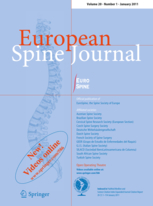
SPINE
Draw-back technique safe and effective in slip reduction for isthmic spondylolisthesis
Eur Spine J. 2014 Jan;23(1):172-9. doi: 10.1007/s00586-013-2858-6. Epub 2013 Jun 1494 adult patients with isthmic spondylolisthesis were randomized to be treated with either conventional in situ posterior lumbar interbody fusion (PLIF) or a draw-back technique, using pedicle screws to reduce vertebral slippage, combined with PLIF. The purpose was to determine the effect of slipped verterbrae reduction on clinical outcomes, radiographic outcomes, and complication rate. Patients were followed up for an average 32.5 months. The results indicated that the draw-back technique significantly reduced slip percentage, increased disk height, and increased lumbar lordosis as compared with in situ fusion, with similar complication rates between groups. However, there was no difference between groups regarding clinical outcome, with both groups improving significantly from baseline.
Unlock the full ACE Report
You have access to {0} free articles per month.Click below to unlock and view this {1}
Unlock NowCritical appraisals of the latest, high-impact randomized controlled trials and systematic reviews in orthopaedics
Access to OrthoEvidence podcast content, including collaborations with the Journal of Bone and Joint Surgery, interviews with internationally recognized surgeons, and roundtable discussions on orthopaedic news and topics
Subscription to The Pulse, a twice-weekly evidence-based newsletter designed to help you make better clinical decisions
Exclusive access to original content articles, including in-house systematic reviews, and articles on health research methods and hot orthopaedic topics
Or upgrade today and gain access to all OrthoEvidence content for just $1.99 per week.
Already have an account? Log in


Subscribe to "The Pulse"
Evidence-Based Orthopaedics direct to your inbox.
{0} of {1} free articles
Become an OrthoEvidence Premium Member. Expand your perspective with high-quality evidence.
Upgrade Now












































































